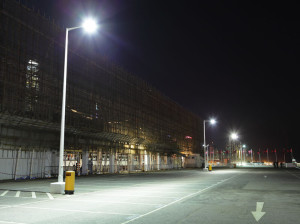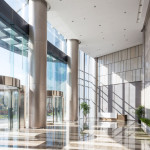 Recently, countries throughout Europe have begun turning off their outdoor lights at night to reduce energy consumption due to the energy cutbacks caused by Russia’s invasion of Ukraine. For example, the government has enacted new laws in Germany to reduce energy nationwide and outdoor lighting in public spaces and landmarks. Even in Paris, the Eiffel Tower lights are being dimmed an hour earlier at night to reduce power. Now images of dimmed historical landmarks at night, like Berlin’s Victory Column or the Berlin Cathedral, show the effect of these changes. The photos show the landmarks are still visible from ambient streetlight but are no longer as brightly lit.
Recently, countries throughout Europe have begun turning off their outdoor lights at night to reduce energy consumption due to the energy cutbacks caused by Russia’s invasion of Ukraine. For example, the government has enacted new laws in Germany to reduce energy nationwide and outdoor lighting in public spaces and landmarks. Even in Paris, the Eiffel Tower lights are being dimmed an hour earlier at night to reduce power. Now images of dimmed historical landmarks at night, like Berlin’s Victory Column or the Berlin Cathedral, show the effect of these changes. The photos show the landmarks are still visible from ambient streetlight but are no longer as brightly lit.
This recent shift in Europe is changing people’s perceptions of outdoor lighting. Is lighting your business at night as necessary as many think? That’s up to each business owner to decide for themselves. But to help you make that decision, here are the different lighting purposes you should consider.
- Ambient lighting: This type of lighting generally lights up space and may be achieved with a simple outdoor lighting structure or a lightbulb. Your business may even benefit from ambient lighting from nearby light sources like street lamps or other light sources.
- Accent lighting: This type of lighting highlights a building’s features or adds to a design. For example, it’s common to install accent lighting to highlight trees, architectural details or other components.
- Task Lighting: This type of lighting is to illuminate surfaces that perform a task, for example, lighting a pathway or using a floodlight to light up a parking lot for safety.
Consider these lighting purposes when considering your outdoor lighting usage and whether you should turn off the lights at night. For example, you may save money by turning off your accent lighting but leaving on your task lighting sources. By factoring in how you use your outdoor lighting and what is necessary for your business and public safety, you can make the right choice for your needs.
Another factor that may change your thoughts about lighting your business at night is the use of LED lights. The recent shift to LED lighting was supposed to be an energy saver for many businesses. Outdoor LED lights are brighter and light more areas, so companies switched to LED lighting to reduce emissions and save energy costs. However, some now believe that because LED lights use less energy, a ‘rebound effect’ is beginning to occur. Many businesses are installing too many lights and negating the energy-saving benefits. This effect may be another good reason for business owners and facility managers to reassess the purpose of their outdoor lighting and weigh the pros and cons of their energy usage.
We know every business has unique reasons for using outdoor or LED lighting, but there are some valid reasons to explore other alternatives. For example, you could install motion sensor lights instead of keeping the lights on throughout the night. Or, use solar-powered lights or invest in additional security measures like fencing or an alarm system to protect your building. Outdoor lighting is just one tool for building security at night and is costly. So if you are considering ways to reduce your business’s energy consumption (and energy bills), you can reconsider how you utilize outdoor lighting and if better options are available to meet your needs.








